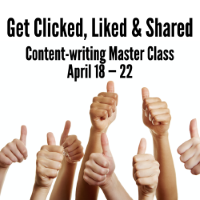Don’t lead with study— or the methodology
It’s not the survey, silly. Most survey stories fail because they focus on the survey, not on the survey results. Here’s how to organize a successful survey story that focuses on the findings, not on the poll:

Set up the survey in the intro.
Start strong.
1. Don’t lead with the survey. Communicate one to three key survey results in the lead. For John Armato’s story about an H&R Block survey, the FleishmanHillard PR pro uses a compression of details lead. He squeezes three fascinating findings into one paragraph:
Notice that Armato doesn’t worry about covering the survey itself in the lead. You don’t need to.
2. Summarize the survey in the nut graph. Now that you’ve shown the fascinating findings, it’s time to introduce the survey itself in a sentence or two:
3. Describe the survey methodology in the background section. Paragraph three is soon enough for this information:
Of course, you’ll want to link to more details for the wonks who want it. Make your methodology, survey questions and full results available, just not in the story itself.
List the survey results in the body.
List three to seven key findings in the body of your survey story. Use a hierarchical structure, moving from most important (or most surprising, or valuable or hilarious …) finding to least. But, to avoid ending with a whimper instead of a bang, finish with your second-most-important finding.
- Parents get cranky while figuring taxes. Nearly half of the kids chose “crabby and mad” to describe their parents’ attitude when figuring their taxes. Only 8 percent chose “excited and happy.”
- No on allowance tax to cover education … When asked whether it would be a good idea or a bad idea to require kids to pay taxes on their allowances to help pay for schools, 70 percent thought it would be a bad idea.
- … but yes on taxes to watch TV. Allowances everywhere took a beating, however, when kids were asked “Given a choice, would you rather pay taxes on your allowance or not be allowed to watch TV?” More than half said they’d rather pay the tax.
Wind up in the conclusion.
1. Transition to the end in the wrapup. What interesting finding can you use to wind the story down?
2. Circle back to the lead in the kicker. Leave a lasting impression with a concrete, creative, provocative final paragraph.
Survey the scene.
Survey stories are a staple of content marketing writing. Use this structure to make the most of your survey reports.
How to create content that almost writes itself
Would you like to master a structure that’s been proven in the lab to attract 300% more readers; get more social media shares; and boost readership, understanding, engagement, interest, satisfaction and more?
If so, please join me at Get Clicked, Liked & Shared — our content-writing workshop that starts April 18.
You’ll master a structure that has increased reading by 520%. Learn to write leads that draw readers in. And leave with templates and recipes you can use to organize the best survey story you’ve ever written, create tipsheets that almost write themselves and write great case studies with our annotated examples.
Content creation has never been easier!
Save up to $100 with our group discounts.
